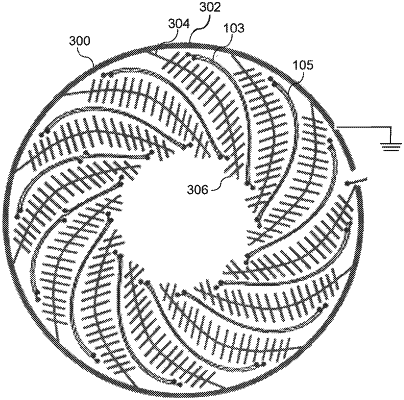| CPC G01V 3/081 (2013.01) [G01D 5/145 (2013.01); G01D 5/20 (2013.01); G01D 5/2258 (2013.01); H01F 21/10 (2013.01)] | 10 Claims |

|
1. An inductive position sensor configured to detect relative position between a first member and a second member, the inductive position sensor comprising:
a transmit aerial configured to be disposed on the first member, the transmit aerial having at least one transmit winding;
a receive aerial configured to be disposed on the first member, the receive aerial comprising one or more receive windings, the one or more receive windings comprising at least one of a sine winding and a cosine winding;
a coupling element operable to be disposed on the second member;
processing circuitry configured to provide one or more signals indicative of the position of the first member relative to the second member based on current induced in the one or more receive windings resulting from an oscillating signal provided to the transmit winding; and
at least one electrostatic shield formed in a same layer as the one or more receiving windings, the electrostatic shield comprising a plurality of conductive traces arranged so that no current loops are formed in the electrostatic shield, the plurality of conductive traces comprising a first conductive trace extending from a first end portion to a second end portion; and a plurality of second conductive traces extending from the first conductive trace, wherein each of the plurality of second conductive traces has an arcuate shape, wherein the electrostatic shield further comprises a plurality of third conductive traces extending from one or more of the plurality of second conductive traces.
|